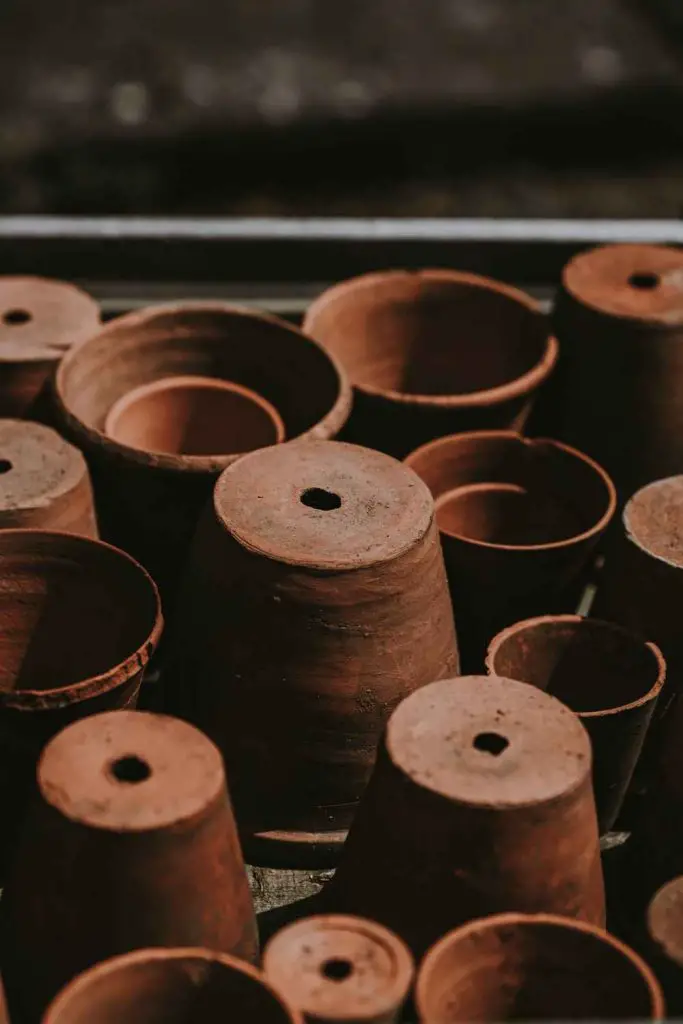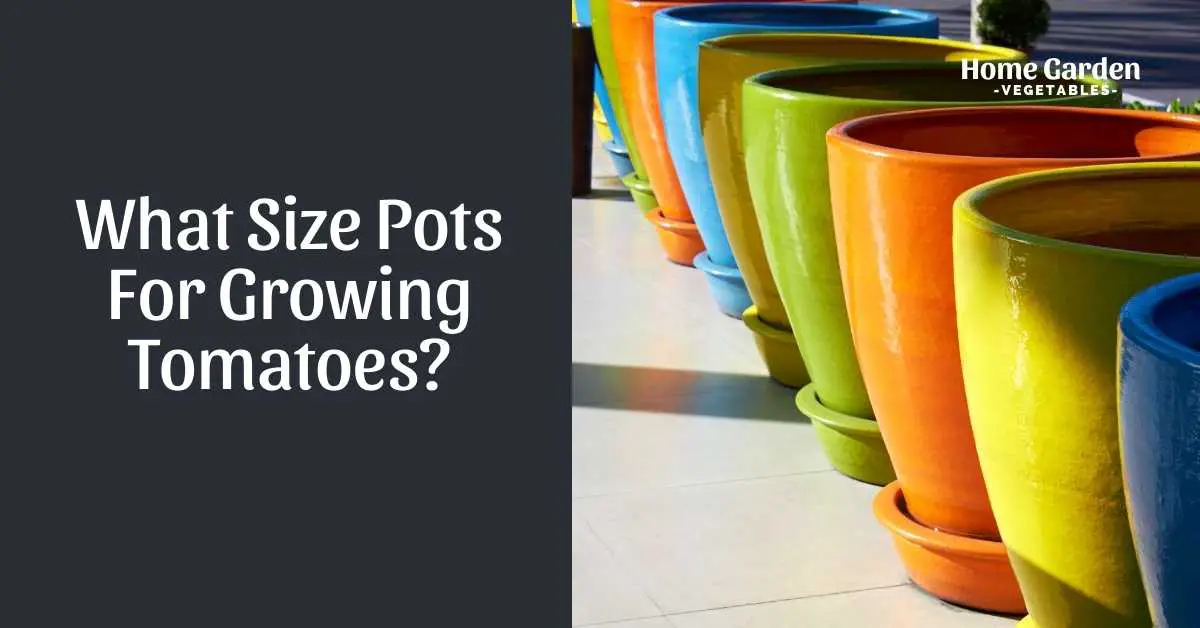If all else goes well, the size of the container can be the deciding factor for your tomato harvest’s fate. If you give them plenty of sunlight, water and nutrients (in short, everything they like), and still receive a harvest that’s less than satisfactory, chances are you aren’t using a correctly sized container. Rootbound tomato plants will produce a smaller yield, and that too with wrinkled, unappetizing tomatoes.
So, then what size pots for growing tomatoes should you pick? Don’t let a wrong decision ruin your harvest quality after you spend all this time nurturing your dear plants. Continue reading and you’ll learn the size of pots that work perfectly for your tomato garden.
Reader Poll: What online courses would interest you?

The Bigger The Better
The pro gardeners like to choose larger containers for tomatoes. Tomatoes have an extensive root system. They will yield better if they have room to develop their roots freely. Smaller containers may result in rootbound plants. If you don’t want to compromise the harvest at the hands of a small pot, it’s best to choose a spacious container. Even the smaller varieties, that won’t take a lot of growing space, will perform better in a larger pot.
In short, when in doubt, go for a bigger pot rather than smaller.
What’s The Perfect Size?

You’ll find many dwarf varieties that can grow in small 8-inch, or 1-gallon, pots. However, growing them in 2-gallon pots will give them a little more room to spread their roots. Most of the larger, indeterminate tomatoes grow best in 5-gallon containers. It’s the perfect size for the roots to grow without obstruction and for the soil to hold moisture for a couple of days, especially during summers.
Subscribe to our newsletter!
Do keep in mind that the sizes mentioned above will support a single tomato plant. Don’t grow more than one plant in a 5-gallon pot or they’ll end up competing for water and nutrients. If you plan on growing multiple tomato plants in the same container, choose a larger size.
5-gallon pots are the perfect size for a single tomato plant.
Don’t Forget Drainage Holes

When speaking of containers, drainage holes can’t be overlooked. Get a container with large drainage holes at the bottom. Holes offer a path for excess water to drain out which would otherwise collect in the soil and rot the roots.
If your pot doesn’t already have them, drill multiple drainage holes at the bottom before setting up the plants. Place it over a tray before setting the pot in your balcony, patio, or porch. The tray will catch all the excess water without creating a mess on the floor.
Rootbound Tomato Plants – What’s The Fix?
If you’re growing your tomato plants in a small container, they’ll end up being rootbound. Most nursery plants are also rootbound. Is there a fix? Let’s find out.
What Are Root bound Plants?
A plant becomes rootbound when its roots fill the container. When you take the plant out of the container, you’ll see the roots winding along the boundaries in search of nutrients and water.
Symptoms Of Root bound Tomato Plants
Other than stunted growth and wrinkled leaves, the appearance of roots above the soil surface is a clear cut sign of severely rootbound tomato plants. If you see roots above the surface, it simply means that the roots have covered the entire space of the pot and are now growing out of the soil. Quick action will be needed.
Transplant To A Larger Pot

You already know what size pots for growing tomatoes are ideal. If your tomatoes were growing in a smaller pot and are rootbound, it’s time to transplant them to a 5-gallon pot.
- Prepare the new pot with fresh soil before removing the plant from its original container.
- Gently remove the plant from its original container.
- Gently work the roots to loosen the ball. You may have to use a little more effort to open up the particularly tough roots. It’s okay if some of them break in the process.
- Place it in the new pot and backfill with fresh soil.
- Water thoroughly after transplanting.
Tips For Growing Tomatoes In Pots
You already know the golden rule for growing tomatoes in pots – use big containers. However, there are certain additional tips that can ensure the success of your potted tomato garden. Here are some things to keep in mind:
- Plant Deeply
While most vegetable plants are planted at the same depth as they were sitting in their original container, that’s not what’s recommended for tomatoes. When you transplant tomato seedlings into the container, plant it deeper than it was sitting originally. The key is to remove a few of the lower sets of leaves and plant it deep enough that a greater portion of the plant is under the soil. This technique helps the plant develop new roots along the portion of the stem that you buried under the soil. Doing so encourages the development of a stronger root system and a sturdier plant.
- Lots Of Sunlight
Tomatoes are sun-loving plants. Whether you grow them in the pot or in the ground, one thing that needs to be ensured is that the crop is getting enough sunshine regularly. Make sure you place the pots somewhere the plants can receive a minimum of 6 to 8 hours of direct sunlight everyday, the more the better. The good thing about pots is that you can monitor the sunlight the plants receive and relocate them to a sunnier spot if they’re not getting enough of it.
- Remember To Water
Remember that the soil in the container dries out much faster than that in the ground. Maintain consistent moisture around the tomato roots by regularly watering the soil. You’ll need to check the moisture daily to stay on top of the watering schedule. If you don’t have enough time to spare, you may want to consider using a self-watering container. During hot summer months, you may even have to water the plant daily. Inconsistent watering near the end of the season can result in fruit cracking and splitting.
Soggy soil isn’t good for the plants either. Maintain optimal moisture, but avoid overwatering. If the tomato plants are exposed to waterlogged soil for long periods, root rot may result. All these problems can be prevented by regular, optimal watering.
- Feeding Tomatoes
Tomato plants are heavy feeders. You won’t see the plants laden with big, juicy fruits unless you’re giving them all the nutrients they need to thrive. In-ground tomato plants can get their nutrients from the decomposing organic matter in the soil surrounding the roots. With limited soil in the container, this isn’t much of a possibility in potted plants. You’ll need to supplement with fertilization on a regular basis.
If the potting soil already includes a fertilizer, you may not have to offer additional doses for the first few weeks. If the potting soil does not include fertilizer, you can mix it with an all-purpose slow-release fertilizer before filling it in the pot and planting the seedlings. During peak season, you can start feeding the plants every two weeks with a tomato-specific fertilizer.
Conclusion
You see how a correctly sized pot can make all the difference when it comes to a successful tomato harvest. What size pots for growing tomatoes have you been using? If you’ve been using small pots, it’s time to switch to 5-gallon containers this season; you won’t regret it!

